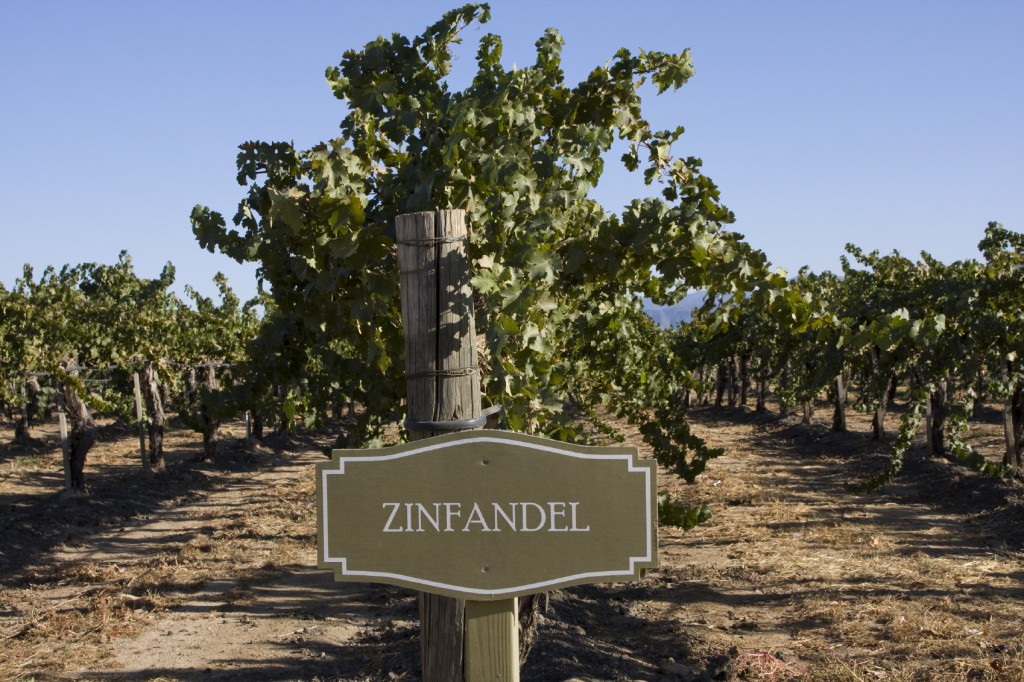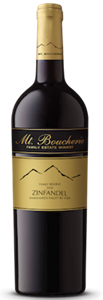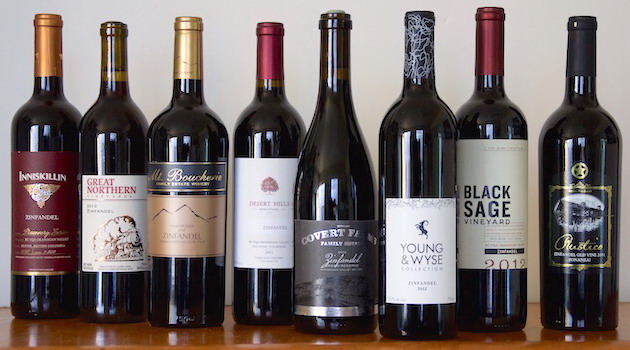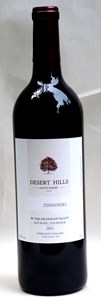 By Mari Kane
By Mari Kane
Zinfandel is a wine that people either love or loathe. Something about its forward, jammy, briary fruit, and intense spice, pepper, and syrupiness, as well as famously high alcohol either sends wine lovers to the moon or out the back door.
Although it’s the 3rd most planted grape in California, Zinfandel is not the biggest seller around North America, falling behind Cabernet, Pinot Noir, Merlot, and Syrah in the red wine category. But California Zinfandel has a cachet that other varietals lack: a hauntingly enigmatic pedigree.
Zinfandel is the international wine of mystery.
What we know is that Zinfandel vines were brought to California in the Gold Rush days when the juice was blended as a rustic jug wine consumed by pioneers. For 150 years, no one knew where Zinfandel came from beyond a Massachusetts nursery.
The varietal was first thought to be related to Italy’s Primitivo grape, but when scientists began DNA testing, it became linked to Pavlac Mali, and then to Crljenak Kaštelanski from Croatia. Currently, Zinfandel is considered to be Tribidrag from the Dalmatian Coast. Next year, Zinfandel might be connected to something else, who knows?
All that international sleuthing for Zinfandel’s parentage helped to raise its vinicultural profile, which gave it entree to vineyards around the globe. Now, Australia has over 100 wineries producing Zinfandel. Vineyards of Zinfandel are also smattered around South Africa, Oregon, Argentina and Mexico. But outside of California and Australia, the biggest production of Zinfandel is coming from Canada’s only desert – the Okanagan Valley.
British Columbia currently has nine producers of Zinfandel using grapes grown in the southern Okanagan Valley as well as a couple of vineyards in the Similkameen Valley.
Being a Sonoma County gal, I’ve eagerly followed the progress of BC Zins over the past ten years. In November, I gathered eight of the nine current vintages of BC Zinfandel and analyzed them with some friends and food. Since the vintages ranged from 2010 to 2013, the only logical tasting order was by alcohol level.
My mission: to determine which BC zins most resemble their California cousins.
The State of BC Zinfandel
Young & Wyse 2012 Zinfandel, Ossoyoos, Okanagan Valley
This wine is deep colored with purple edges and has aromas of licorice and briary fruit. In the mouth there’s a mix of bright red fruit and big plum flavors, plus spices and black pepper. It’s a bit angular in structure, and lots of good acidity make it quite juicy. The finish is long and dry with bright fruit lingering. Somewhat syrah like in its plumminess, it paired nicely with lamb and chicken kabobs. 13.7% alcohol $23.90

Covert Farms 2012 Zinfandel Grand Reserve, Oliver, Okanagan Valley
Deep red, almost black, in color. The nose exhibites notes of black and blue fruit, flowers, baking spice, and berry pie. The palate starts smooth and lush, then turns zingy with acidity followed by layers of black and blue fruit. It has excellent balance, good structure, and a rich, full body. The finish has medium length of red and black fruit, with refreshing acidity. An elegant food wine, very approachable and friendly, perfect with quesadilla and salsa, lamb, chicken, and bbq ribs. 13.9% alcohol $41.65
Black Sage Vineyard 2012 Zinfandel, Black Sage Bench, Oliver, Okanagan Valley
Dark red in color with a nose full of spice, herbs, jammy black cherry, and cocoa powder. In the mouth it has ripe fresh fruit, sweet oak and cookie dough, finishing with a rush of acidity, candied black fruit, and notes of chocolate. This zin was a crowd favorite, said to be “delicious” “jammy”, “juicy”, “satisfying” and “complex” by the group. Perfect with lamb, caramel cake and dark chocolate. 14% alcohol $23
Inniskillin 2011 Zinfandel, Discovery Series, Bear Cub Vineyard, Oliver, Okanagan Valley
Inniskillin was the first BC Zinfandel I ever tasted, around 2007. Light red in color, the current vintage has aromas of black cherry and spicy oak. The palate is peppery with black cherries and has a lush mouthfeel, good balance, and some bright acidity. The finish is a little short but has lovely cherry notes and a hint of briar. It’s an easy drinking zin, approachable and pleasant, and surprisingly good with stir fry laced with soy sauce.14% alcohol $23

Mt Boucherie 2010 Zinfandel Family Reserve, Cawston, Similkameen Valley
One of the lightest colored reds, this zin has an aroma of bright red and citric fruit, as well as floral notes. Red fruit is reflected on the palate, as well as spices, pepper, and even a little grapefruit. The finish is juicy with fresh red raspberries and just a touch of heat. An elegant and racy zin with a medium body and big flavor. Excellent with the lamb. 14.2% alcohol $35

Rustico 2011 Zinfandel Old Vine Bonanza!, Golden Mile Bench, Oliver, Okanagan Valley
Almost black with deep red edges, the nose features stewed black cherries and a touch of orange peel. The body is hefty and big shouldered, showing toasty black fruit, leather, a soft mouthfeel, and medium tannins, finishing long and dry with a nice chocolate note. It’s a hearty, rustic-style zin, that’s perfect with bbq pork, chocolate cookie and even said stir fry. 14.3% alcohol $35
Desert Hills 2011 Zinfandel, Three Boys Vineyard, Black Sage Bench, Oliver, Okanagan Valley
Deep red in color, this one sports a floral nose with briary black fruit and spices. In the mouth it has candied and jammy blackberries and plums, with licorice and spice. The medium-length finishes juicy and clean with lingering spiciness and candied fruit. Almost Californian in style and truly excellent with turkey, yams, stir fry and chocolate cookie. 14.7% alcohol $40

Kettle Valley 2013 Zinfandel, Great Northern Vineyard, Cawston, Similkameen Valley
Light red in color and clear in density, this wine had a nose of dense ripe fruit. The mouth shows super ripe, dried black fruit and sizzling acidity on a medium body that’s pretty lean. The finish is medium length, with notes of raisin and root beer before it turns hot. The wine tastes cooler than expected from 16% alcohol, but physically, you feel the heat. The longer the wine breathes, the boozier it gets. Potent and bold, Kettle Vally is probably the most Californian of all the BC Zins. Not a sipping wine, it tastes great with chicken sausage, caramel cake and chocolate cookies. 16% alcohol $24
Similar Differences
All of these BC Zins were excellent in their own way, but clearly their characteristics diverge from the California Zins most zinfanatics know.
Overall, we found that BC Zins are cooler in alcohol and brighter with acidity than their California counterparts. BC Zinfandels tend to be less bold, but more food friendly. A few have characteristic notes of briar, and the spice and pepper are certainly prevalent.
But where some California Zins tend to punch you in the face, BC Zins are more likely to pat you on the back. And you won’t hear a BC Zin say, “sorry,” because the varietal is becoming a thing in the Okanagan.
Invite a BC Zinfandel to your holiday dinner and let its charms surprise you. It will be zinsational!
 Mari Kane is a writer from Sonoma County, California who lives in Vancouver, BC, blogging about wine at Tasting Room Confidential.
Mari Kane is a writer from Sonoma County, California who lives in Vancouver, BC, blogging about wine at Tasting Room Confidential.
She recently finished her wine memoir and is publishing excerpts at Mouthfeel: Confessions of a Wine Slut. Please subscribe to the site to receive alerts and follow her on Twitter to read Mouthfeel pull quotes.











